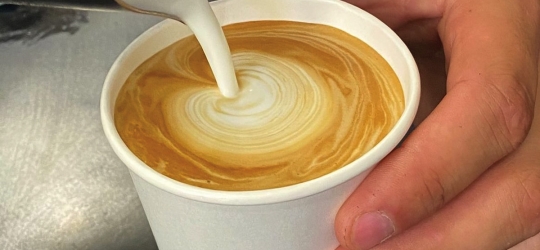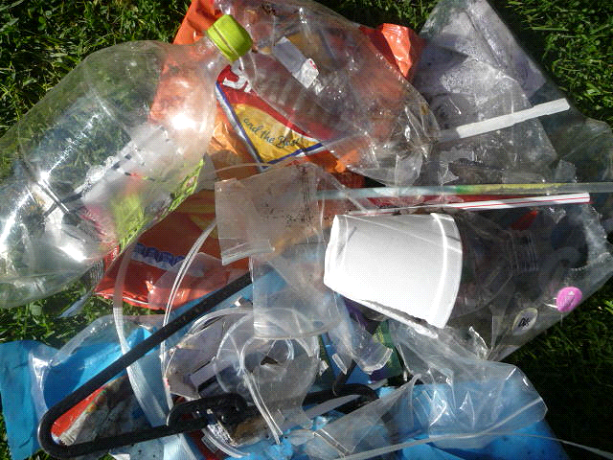
Why coffee cups are a recycling nightmare – Inside Waste – Australia
Posted on June 23, 2022 by DrRossH in Plastic Waste News
Why coffee cups are a recycling nightmareBRENDAN LEE7 hours agoImage: ShutterstockOver one billion disposable coffee cups are used by Australians every year. They fill up our bins, overflow into the streets and parkways, and blow into our waterways and beaches. They also create great recycling confusion. They are primarily made from paper, right? So why can’t they go in the recycling bin? The circular economy purist will tell you that recycling is not the answer. Instead, they insist we must aspire to higher order waste hierarchy outcomes like avoidance, reuse and redesign. While this principle is well-placed, if we hold onto it too tightly, we are likely to only propose solutions that preach to the converted, and meanwhile lose engagement with the majority of the population. Using the Simply Cups coffee cup recycling program as an example. In this article I will explore the different levels where people from all walks of society can actively make progress towards a circular economy future. But, first, let’s explore some of the basics.Why are coffee cups a recycling problem?A coffee cup has an internal liner that keeps liquid in. This functional design means users can drink their coffee instead of wearing it. However, this lining creates a problem when it comes to the pulping process that makes cardboard from recovered fibre.Almost all the pulp mills (paper manufacturers) in Australia are designed to turn old cardboard products into new cardboard. Like any industrial process, these mills are designed to maximise efficiency to operate in a commercially viable manner. A key part of this process involves tipping recovered cardboard into a large tub of cold water and applying some gentle agitation, much like a top-loading washing machine. The agitation period is typically brief – several minutes – during which the fibre particles disassociate, producing a porridge-like slurry. For this step in the process to be effective, it requires the water to penetrate from both sides of the cardboard. The coffee cup liner therefore reduces the liquid penetration by around 50 per cent. The bonding agents that secure the internal liner to the fibre body of the cup grips onto the adjacent fibres, further reducing the fibre recovery rate. Finally, when the centrifuge is turned on at the end of the agitation phase, the unwanted liner (which is now a small plastic bag) captures some of the fibre slurry with it as it is spun out into the out throw line. These factors combine to deliver a nett fibre recovery rate of around zero.Furthermore, because almost all Australia’s pulp mills are designed to make plain brown cardboard, the bleached and dyed fibres of a coffee cup are undesirable. Consequently, the upstream sorting process is designed to divert coffee cups and other three-dimensional packaging away from the pulp mill inputs and into landfill.Are compostable cups a better option?Generally, no. While compostable cups can be effective in a closed environment where it can be guaranteed that 100 per cent of the packaging is compostable, in most situations the compostable packaging gets lost in the crowd.Like standard coffee cups, compostable cups are not desirable for a pulp recovery operation. Relatively few industrial composters accept compostable packaging because it takes longer to break down than food/green waste and it often contains bleach, dyes and chemicals. These combine to compromise the efficiency of the composting operation and the quality of the end product (potting mix, etc) making it an unattractive commercial prospect.What are the solutions and how can everyone play a part?There are many actions consumers can take to minimise the impacts of their daily coffee consumption. Thankfully, these actions span across the circular economy or the waste hierarchy spectrum so that people from all walks of life can participate.The purist will say that disposable coffee cups should be banned, and consumers should avoid them by dining in or choose a reusable cup for their daily fix. The aspiration of this approach is commendable, and a segment of consumers hit this high-level outcome. However, what about the majority of consumers for whom this just doesn’t work? Australia’s two biggest take-away coffee sellers are McDonalds and 7-Eleven, who, between them, sell around 400 million coffees per year. There is no ceramic dine-in option, and a large proportion of customers are vehicle-based workers – tradies, delivery drivers, taxi/Uber drivers, etc. For many of these people a reusable cup isn’t an option because it will spend at least part of the day in a hot car, which means their reusable cup would soon become rank and unusable.7-Eleven’s participation as the pioneering partner in the Simply Cups program means that their customers can also be circular economy participants by recycling their coffee (and slurpee) cups at the in-store collection units. Vehicle-based workers require fuel multiple times each week – for their vehicle an
Source: Why coffee cups are a recycling nightmare – Inside Waste
It is being a bit too optimistic to think that the tradies and people on the remove will keep their cups in their car till they get to another station that will recycle them.

 How many people today grab a takeaway coffee cup from the local cafe to drink on the go? We don’t know, but the number must be enormous.. Most every one of the above have a plastic top that will last 100s of years. Some cafes still use plastic cups that last a similar time. Is 10 minutes of coffee worth 100s of years of trash?
These items can be seen littering our gutters and on our streets all over the place. If they were all cardboard, they would still be littered, but they would, at least, be gone in a short time.
They do not need to be made of plastic.
How many people today grab a takeaway coffee cup from the local cafe to drink on the go? We don’t know, but the number must be enormous.. Most every one of the above have a plastic top that will last 100s of years. Some cafes still use plastic cups that last a similar time. Is 10 minutes of coffee worth 100s of years of trash?
These items can be seen littering our gutters and on our streets all over the place. If they were all cardboard, they would still be littered, but they would, at least, be gone in a short time.
They do not need to be made of plastic.
 On the way home from the gym last week, a distance of about 1 km (1/2 mile), I counted the items of plastic litter on the curb as I walked. In that short distance I counted 63 pieces of plastic litter. Plastic drink bottles, bottle tops, candy wrappers, plastic film, polystyrene fragments etc. That seemed to be a lot to me. I guess it is a generational thing. Our parents would have been horrified to see that amount, whereas it seems to go unnoticed by our youth of today. In another 20 years how many pieces will there be on this stretch, -- 200? What will today’s youth think of that new amount then when they are older? Will their children be so readily accepting of a higher amount of litter?
On the way home from the gym last week, a distance of about 1 km (1/2 mile), I counted the items of plastic litter on the curb as I walked. In that short distance I counted 63 pieces of plastic litter. Plastic drink bottles, bottle tops, candy wrappers, plastic film, polystyrene fragments etc. That seemed to be a lot to me. I guess it is a generational thing. Our parents would have been horrified to see that amount, whereas it seems to go unnoticed by our youth of today. In another 20 years how many pieces will there be on this stretch, -- 200? What will today’s youth think of that new amount then when they are older? Will their children be so readily accepting of a higher amount of litter?
Discussion · No Comments
There are no responses to "Why coffee cups are a recycling nightmare – Inside Waste – Australia". Comments are closed for this post.Oops! Sorry, comments are closed at this time. Please try again later.